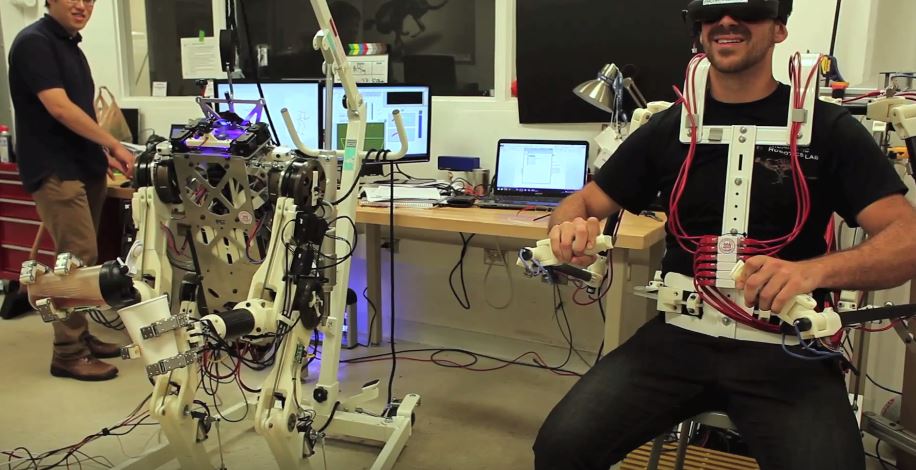
The elaborate bipedal world of humans is periodically filled with pockets of death that humans cannot access, but must access to prevent the fruition of a far worse disaster. A chief example that comes to mind is the Fukushima Daiichi nuclear reactor disaster in Japan that spewed heaps of radiation in nearby waters after tsunami-damaged equipment could not be repaired in time to prevent the loss of the coolant needed to maintain the fuel rods from melting.
Seeking to spur the hand of innovation and accelerate the creation of human-shaped robots that are able to act in inhospitable terrain where dexterity is a must, DARPA has launched the rescue robots challenge, a contest where teams prototype exactly this kind of Robot. One of rising superstars is a HERMES, a humanoid robot steered by a human pilot strapped to a remote-controlled exoskeleton. HERMES was built by roboticists at MIT and features human-like reflexes and dexterity.
According to PhD candidate Joao Ramos, creating such a robot is the equivalent of “trying to put the human’s brain inside the robot,” as it operates that 1-to-1 manner exhibited by the robots in the film Pacific Rim . But unlike those robots, HERMES is not 100 feet tall. Instead, he’s roughly four feet tall with three-fingered hands capable of delicately pouring coffee, crushing cans, and punching through cardboard.
Although the wondrous feats are directly carried out by his hands, the key innovation is actually the sensors. In order to make the robot more human-like, the team incorporated sensors on HERMES that actually feed input back to the human pilot, who then corrects his positions to teach HERMES the proper reflex.
Similarly, controllers in the exoskeleton’s hands allow the human pilot to directly manipulate HERMES’ own hands while a camera on its head transmits video footage to the pilot, creating a mind-body illusion that the pilot is seeing through the robot thereby is the robot.
Albert Wang, another PhD candidate working on the project, hopes to eventually “merge autonomous control with human intelligence.”
Source: MIT
Advertisement
Learn more about Electronic Products Magazine





